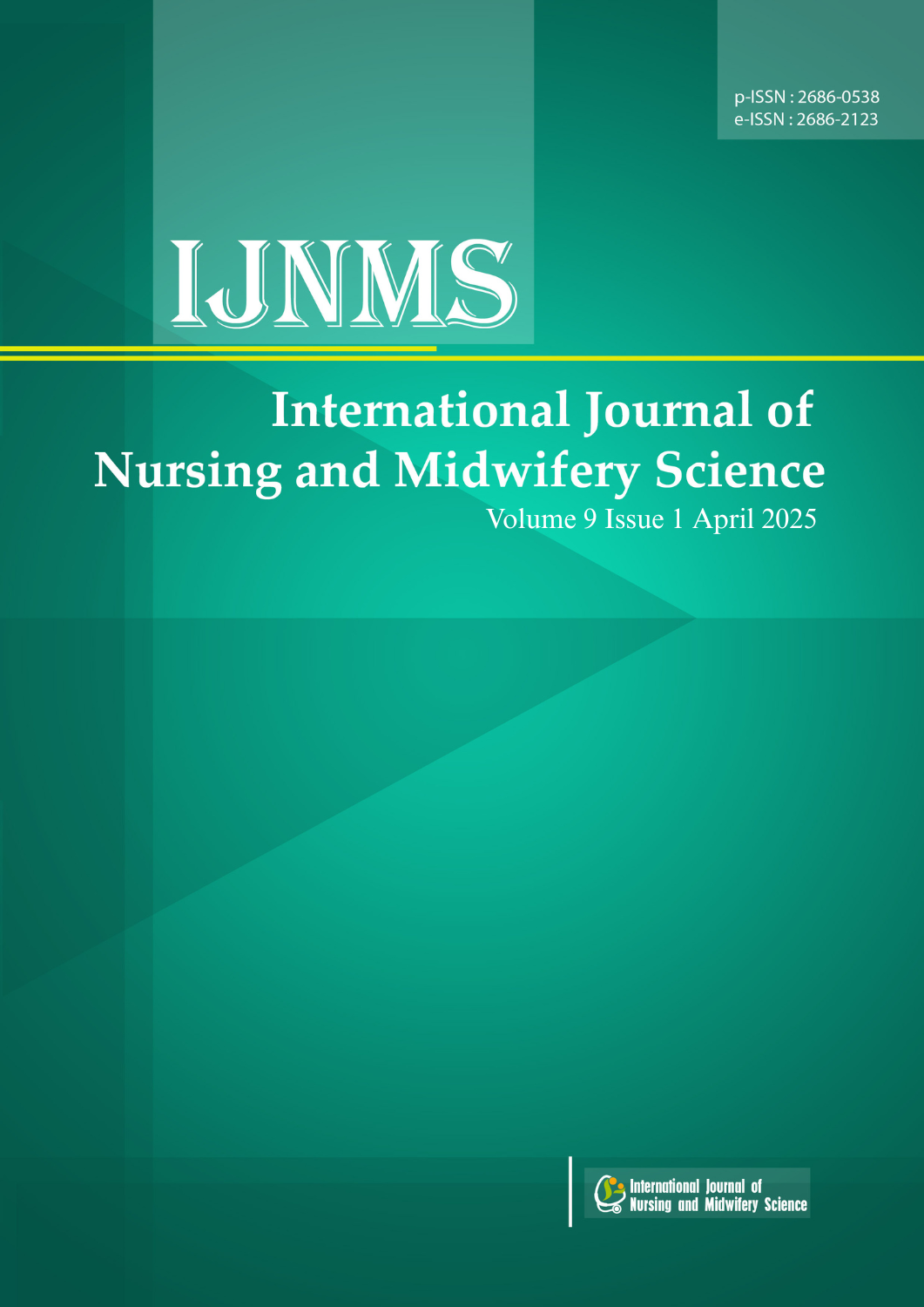EFFECTIVENESS OF ERGONOMIC EXERCISE ON BLOOD SUGAR IN DIABETES MELLITUS PATIENTS
DOI:
https://doi.org/10.29082/IJNMS/2025/Vol9/Iss1/700Keywords:
blood sugar levels, diabetes mellitus, ergonomic exercisesAbstract
Diabetes is a chronic metabolic disorder characterized by hyperglycemia because the pancreas is unable to produce enough insulin and the body is unable to use insulin effectively. If diabetes mellitus is not treated properly, it will cause acute and chronic complications. Physical activity training is one of the non-pharmacological management of diabetes mellitus. One form of physical activity training is ergonomic gymnastics. This study aims to determine the effect of ergonomic exercises on blood sugar levels in patients with diabetes mellitus in Krembung Public Health Center. This research is a quantitative study using Pre-Experimental Design One Group Pre- Test Post-Test with 36 respondents. This study shows that there is a decrease in the average blood sugar level on the first day of 234 mg/dL to 209.5 mg/dL, on the second day the average blood sugar level from 211.5 mg/dL to 187.7 mg/dL while the average blood sugar level of the third meeting from 175.7 mg/dL to 148.8 mg/dL. Ergonomic gymnastics involves the main muscles that can make insulin receptors increase and more sensitive so as to reduce blood sugar levels. This is evidenced by the results of the analysis using the Paired T-Test test obtained a p-value of 0.000 (<0.05) which shows the effect of ergonomic exercises on blood sugar levels in patients with diabetes mellitus in Krembung Public Health Center. Based on the results of this study, ergonomic exercises are important to be done routinely in patients with diabetes mellitus to reduce blood sugar levels.
Downloads
References
Dinkes, K. M. (2022). Profil Kesehatan Provinsi Jawa Timur.
Febrianti, N., Wijaya, I., & Kio, A. (2021). PENGARUH SENAM ERGONOMIK TERHADAP PENURUNAN KADAR GULA DARAH PADA LANSIA DENGAN DIABETES MELITUS DI DESA SIDAKARYA, DENPASAR SELATAN. Jurnal Ilmiah PANNMED (Pharmacist, Analyst, Nurse, Nutrition, Midwivery, Environment, Dentist), 16, 364–368. https://doi.org/10.36911/pannmed.v16i2.1116
Hasina, S. N. (2022). Reducing blood glucose levels in the elderly with diabetes mellitus using ergonomic exercise based on spiritual care. International Journal of Health Sciences, 6(July), 6650–6658.
Kemenkes, R. (2018). Laporan Riskesdas. Kementerian Kesehatan Republik Indonesia. https://dinkes.babelprov.go.id/sites/default/files/dokumen/bank_data/20181228 - Laporan Riskesdas 2018 Nasional-1.pdf
Muhaimin, A., Rohman, H. F., & Fauzi, A. K. (2024). Effect of Ergonomic Exercise on Blood Glucose Levels and Anxiety in Type 2 Diabetes Mellitus Patients. 01(01), 9–15.
Nurisyah, A. A., & Dewi, R. (2024). EDUKASI HIDUP SEHAT UNTUK PENCEGAHAN DIABETES DENGAN PEMANFAATAN SERBUK INSTAN KAYU SECANG, KAYU MANIS, JAHE DAN SEREH BAGI WARGA KELURAHAN SAMBUNG JAWA KOTA MAKASSAR. Jurnal Pengabdian Kefarmasian, 5(1).
Raveendran, A. V, Chacko, E. C., & Pappachan, J. M. (2018). Non-pharmacological Treatment Options in the Management of Diabetes Mellitus. European Endocrinology, 14(2), 31–39. https://doi.org/10.17925/EE.2018.14.2.31
Rivai, A., & District, B. (2020). EFFECT OF ERGONOMIC EXERCISE ON CHANGES IN BLOOD SUGAR LEVELS IN DIABETES MELLITUS PATIENTS IN THE IN PATIENT ROOM OF DR. ABDUL RIVAI BERAU DISTRICT. Jurnal Ilmu Kesehatan, 8(2), 143–154.
Wilda, L. O., Hutama, F. H., & Kuntari, D. (2022). THE EFFECT OF ERGONOMIC GYMNASTICS ON CHANGES OF BLOOD SUGAR LEVELS IN ELDERLY WITH DIABETES MELITUS. Nursing Analysis: Journal of Nursing Research, 2(2), 128–134.
Downloads
Published
Issue
Section
License
Copyright (c) 2025 Lutfi Wahyuni, Umi Azizah Kusumaningrum

This work is licensed under a Creative Commons Attribution-ShareAlike 4.0 International License.
Authors who publish with IJNMS agree to the following terms
- Authors retain copyright licensed under a Creative Commons Attribution-ShareAlike 4.0 International License that allows others to share the work non-commercially with an acknowledgement of the work's authorship and initial publication in this journal.
- Authors are permitted and encouraged to post their work online (e.g., in institutional repositories or on their website) prior to and during the submission process, as it can lead to productive exchanges, as well as earlier and greater citation of published work (See The Effect of Open Access). Authors can archive pre-print and post-print or publisher's version/PDF.









_IJNMS.png)






